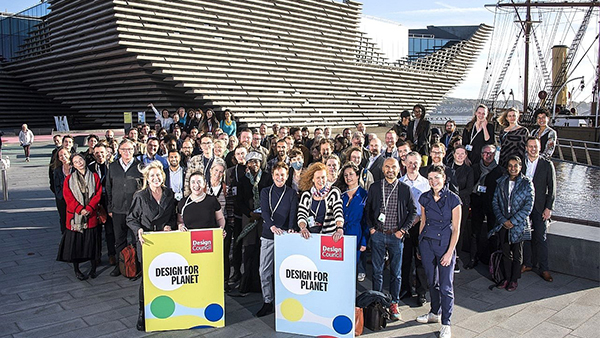The most entrenched social challenges of our times will only be solved when people and organisations work together – across sectors, across borders and across cultures (local and global). We know this. But while people and organisations have been collaborating for years in many different forms, there has been less embedding of frameworks that enable collaboration to generate significant impact. Collective impact offers one approach with potential. Part one of this article will explore the collective impact model, and part two will look at how to make it work in the UK context.
Our biggest social challenges demand collaboration
During 2015 some of the biggest social challenges of our times took centre stage. Climate change at the Paris Climate Change Conference, health care in developing countries with the Ebola outbreak, immigration with the ongoing ‘migrant crisis’ and the growing gap between the 1% and the rest with calls to ‘even it up’ just to name a few. Against this backdrop, the new Sustainable Development Goalswere released. Each of the goals represents an entrenched and systemic challenge that requires a joined-up approach – a shift in the way we view and respond to the challenge. They each demand collaboration.
We know this. We’re already talking, already thinking about it, and already doing it. Collaboration has become a buzz word. Or rather, lots of buzz words: collaborative governance, strategic alliances, open innovation, networked governance, distributed public governance, integrated governance, joined-up solutions, collective intelligence ... this list goes on.
There have been lots of effective and sustained partnerships in the UK and around the world. But as others such as Geoff Mulgan have highlighted, collaboration as a discipline seems to be a field that doesn’t learn from the past. And collaborative practices tend to remain on the margins, often deeply antithetical to the normal ways of doing business. There has been limited deep embedding of new, co-productive ways of working, and it would seem the talk about collaboration precedes the substance in some cases. And that may be partly because …
Collaboration doesn’t always come naturally
As a (rather large) generalisation, the Western world is dominated by neoliberal politics, thanks to the 1980s legacy of Thatcher and Regan. Neoliberal ideology puts market-based competition at the forefront, and when that logic is applied to solving social challenges, the result can be disastrous. Competition fosters social innovation processes that are trapped within a single organisation and are limited to one organisation’s beneficiary group. The question becomes not, ‘how can we build on what’s already working?’ but ‘how can I develop my own solution to the problem?’, a discourse fuelled by the dialogue of the ‘social innovation superhero’.
This effect is all too clear in the number of registered charities in the UK - 164,097 according to the Charity Commission, of which 75% have an annual income of less than £100,000 and 41% less than £10,000 (!). Even in the smallest communities there will be dozens of efforts with similar goals, members, strategies and funders that have never sat together to discuss how their work overlaps.
The narrowing and fragmentation of social change efforts is intensified by the often short-term and project-based nature of available funding and the demand for evidence of ‘social impact’ that attributes outcomes to the actions of a single organisation or project. And so social change is designed (or retrofitted) to tick boxes on funding applications and look good in an impact report with bar charts all moving in the right direction. But the bigger challenges we’re working to fight (poverty, climate change, inequality – the list is long) remain stubbornly in place.
The challenge is not about resources so much as alignment and effective use of the resources we already have.
Is there a better way?
Yes we know that in many cases (but not all) we need to collaborate more. It’s a no-brainer – one plus one equals three. But how do we take learning from the past and create a framework that will lead to a step change?
Collective impact is one attempt to codify an approach to collaboration, in response to the recognition that traditional models of social change weren’t going far enough.
It’s a structured form of collaboration first written about by two American social scientists – John Kania and Mark Kramer – and has five criteria:
- Common agenda: all participants have a shared vision for change including a common understanding of the problem and a joint approach to solving it through agreed upon actions.
- Shared measurement: collecting data and sharing results consistently across all participants ensures efforts remain aligned and participants hold each other accountable.
- Mutually reinforcing activities: participant activities must be differentiated while still being coordinated through a mutually reinforcing plan of action.
- Continuous communication: consistent and open communication is needed across many players to build trust, assure mutual objectives and create common motivation.
- Backbone support: creating and maintaining collective impact requires a separate organisation(s) with staff and a specific set of skills to serve as the backbone for the entire initiative and coordinate participating organisations and agencies.
Is collective impact any different to other forms of collaboration?
Collective impact as a practice is not new. What is potentially new however is the codification of it, bringing together a range of collaborative approaches into a cohesive framework.
Collective impact is not a panacea, it is not an end itself, and it is not without its complexities and challenges. But it provides a clearly structured (although complex) approach to collaboration and helps widen a community’s vision. It acknowledges the strengths of existing programmes and the assets of the community and builds on them. It facilitates the scope of action required from people and organisations across all sectors in society, simultaneously, at both a local and system-wide level. Most importantly, it acknowledges that a ‘backbone organisation’ is required to integrate this wide, cross-sector scope of action.
Collective impact is specifically focused on systems change, where all partners consider their impact on the broader ecosystem, not just their own organisations. It acknowledges that large scale social problems are complex, and there is no one single solution, and even if there was, there is no one organisation or individual that could compel all actors involved to adopt it.
Collective impact also has the potential to transcend traditional sector structures. It starts with a process of alignment by mapping what’s already in place, and brings together those who are best placed as a result of their roles in society to make an impact. It makes solving social challenges a shared responsibility, as opposed to the more traditional approach where government is seen as responsible, the third sector fills the gaps they miss, and the private sector carries on serving itself while offering occasional handouts.
Rather than seeing the problem through the lens of a particular organisational agenda or as one organisation’s responsibility, collective impact sharpens a community’s collective vision so previously hidden solutions and resources emerge. And from that perspective, it offers potential.
Tara Anderson is Co-Founder and Director at The Dragonfly Collective, an international consultancy working with others to reduce inequality and create a more just world. Read the full research paper on collective impact here.
Related articles
-
A design revolution for the climate emergency
Joanna Choukeir
Joanna Choukeir on Design for Planet, the global gathering of designers during COP26, and the changes design must make.
-
US elections: the whole world is watching
Adanna Shallowe
The Caribbean’s experience shows how American policy affects us all.
-
The broader purpose of the environmental movement
Hila Chenzbraun Philipa Duthie
How can environmental movements tackle the climate crisis and social and racial injustice?




Be the first to write a comment
Comments
Please login to post a comment or reply
Don't have an account? Click here to register.